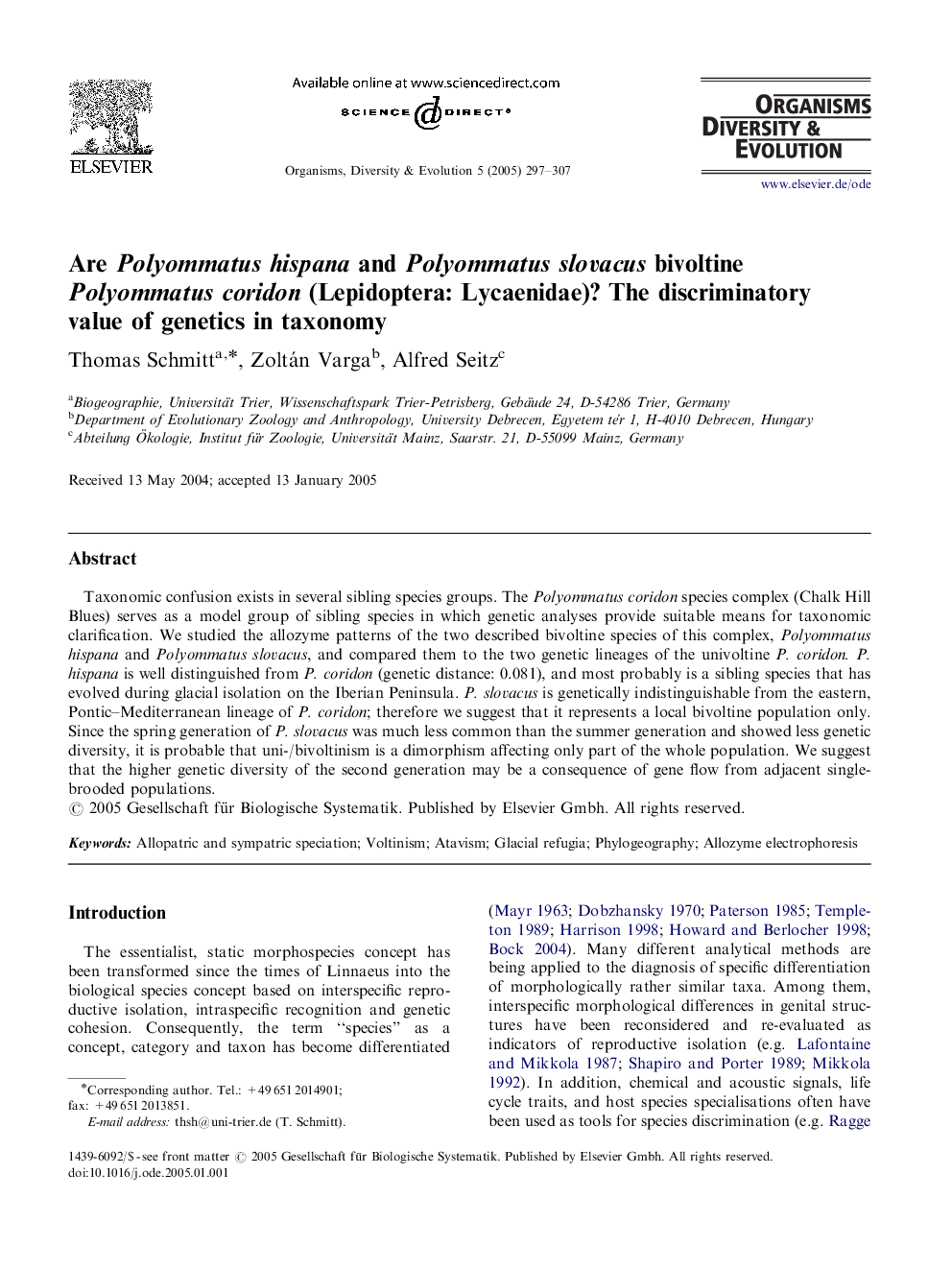| Article ID | Journal | Published Year | Pages | File Type |
|---|---|---|---|---|
| 9461425 | Organisms Diversity & Evolution | 2005 | 11 Pages |
Abstract
Taxonomic confusion exists in several sibling species groups. The Polyommatus coridon species complex (Chalk Hill Blues) serves as a model group of sibling species in which genetic analyses provide suitable means for taxonomic clarification. We studied the allozyme patterns of the two described bivoltine species of this complex, Polyommatus hispana and Polyommatus slovacus, and compared them to the two genetic lineages of the univoltine P. coridon. P. hispana is well distinguished from P. coridon (genetic distance: 0.081), and most probably is a sibling species that has evolved during glacial isolation on the Iberian Peninsula. P. slovacus is genetically indistinguishable from the eastern, Pontic-Mediterranean lineage of P. coridon; therefore we suggest that it represents a local bivoltine population only. Since the spring generation of P. slovacus was much less common than the summer generation and showed less genetic diversity, it is probable that uni-/bivoltinism is a dimorphism affecting only part of the whole population. We suggest that the higher genetic diversity of the second generation may be a consequence of gene flow from adjacent single-brooded populations.
Related Topics
Life Sciences
Agricultural and Biological Sciences
Animal Science and Zoology
Authors
Thomas Schmitt, Zoltán Varga, Alfred Seitz,
